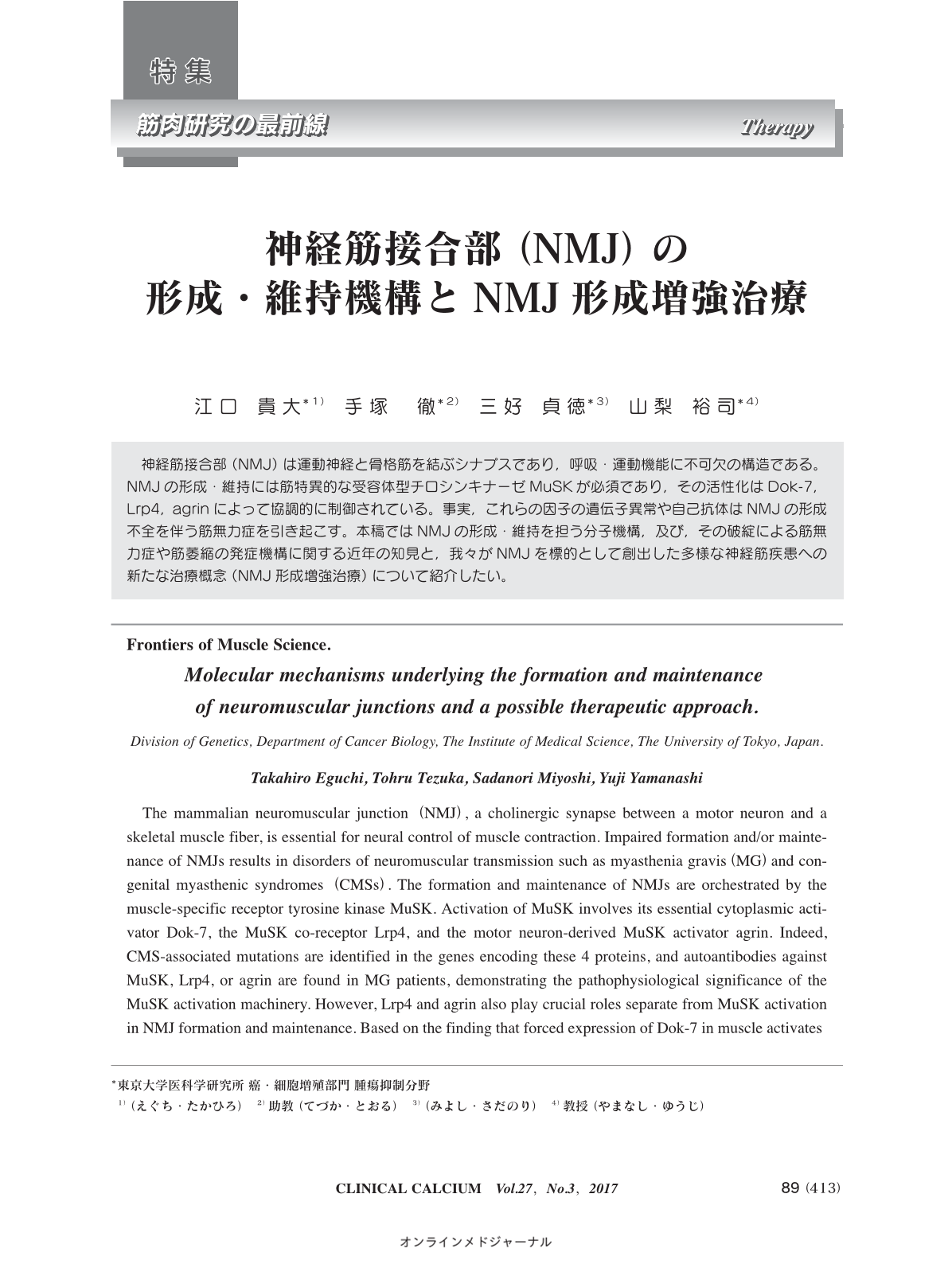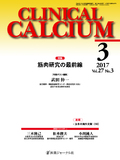Japanese
English
- 有料閲覧
- Abstract 文献概要
- 1ページ目 Look Inside
- 参考文献 Reference
神経筋接合部(NMJ)は運動神経と骨格筋を結ぶシナプスであり,呼吸・運動機能に不可欠の構造である。NMJの形成・維持には筋特異的な受容体型チロシンキナーゼMuSKが必須であり,その活性化はDok-7,Lrp4,agrinによって協調的に制御されている。事実,これらの因子の遺伝子異常や自己抗体はNMJの形成不全を伴う筋無力症を引き起こす。本稿ではNMJの形成・維持を担う分子機構,及び,その破綻による筋無力症や筋萎縮の発症機構に関する近年の知見と,我々がNMJを標的として創出した多様な神経筋疾患への新たな治療概念(NMJ形成増強治療)について紹介したい。
The mammalian neuromuscular junction(NMJ), a cholinergic synapse between a motor neuron and a skeletal muscle fiber, is essential for neural control of muscle contraction. Impaired formation and/or maintenance of NMJs results in disorders of neuromuscular transmission such as myasthenia gravis(MG)and congenital myasthenic syndromes(CMSs). The formation and maintenance of NMJs are orchestrated by the muscle-specific receptor tyrosine kinase MuSK. Activation of MuSK involves its essential cytoplasmic activator Dok-7, the MuSK co-receptor Lrp4, and the motor neuron-derived MuSK activator agrin. Indeed, CMS-associated mutations are identified in the genes encoding these 4 proteins, and autoantibodies against MuSK, Lrp4, or agrin are found in MG patients, demonstrating the pathophysiological significance of the MuSK activation machinery. However, Lrp4 and agrin also play crucial roles separate from MuSK activation in NMJ formation and maintenance. Based on the finding that forced expression of Dok-7 in muscle activates MuSK and enlarges NMJs, we recently developed DOK7 gene therapy as a therapy aimed at enlarging the NMJ, which has potential for treating various neuromuscular disorders with defective NMJ structure.



